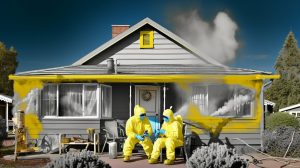Homeowners insurance rates can vary based on several factors, including the age of the property. If you own an older home, you may wonder if insurance costs for older homes are generally more expensive. In this section, we will explore this question and provide insights into how insurance providers determine rates for older properties.
Key Takeaways
- Insurance costs for older homes may be higher due to factors such as the age of the property and materials used in construction.
- Regular home maintenance and upgrades can help reduce insurance costs for older properties.
- Comparing insurance premiums for older and newer homes can provide insight into potential cost differences.
- Homeowners of older properties can take steps to mitigate insurance costs, such as installing security systems and updating electrical systems.
- Overall, insurance rates for older homes may be higher, but there are ways to potentially lower costs with preventive measures and comparisons.
Sure, I can help you with that.
Factors that Impact Insurance Costs for Older Homes
When it comes to determining insurance costs for older homes, several factors come into play. Insurance providers consider the age of the home, its construction materials, the condition of the electrical and plumbing systems, and any updates or renovations done to the property.
The age of the home is a significant factor, as older homes tend to have more wear and tear. Older properties may have outdated electrical and plumbing systems that can be costly to replace or repair if damaged. Additionally, older homes may be constructed from materials that are no longer commonly used, such as lead paint or asbestos, which pose potential health hazards.
Insurance providers may also consider any renovations or upgrades done to the property. Upgrades such as a new roof, updated electrical or plumbing systems, or the installation of safety features like smoke detectors, alarm systems, or fire extinguishers can help reduce insurance costs as they make the home safer and less prone to damage.
If the home has not been updated in a while, it may be a good idea to consider a home inspection to identify any potential issues that can be addressed before purchasing insurance. This can help reduce premiums in the long run as insurance companies may be more willing to provide coverage for a well-maintained and updated property.
In the next section, we will discuss the importance of home maintenance and upgrades for older properties, and how they can help in reducing insurance costs.
I hope that helps!
Importance of Home Maintenance and Upgrades
Regular maintenance and necessary upgrades can be highly beneficial in reducing insurance costs for older homes. Insurance providers often consider the overall condition and safety features of a home when determining rates, so it’s important to keep your property in top condition to mitigate the risk of damage or loss.
One key area to focus on is the electrical and plumbing systems. Older homes may have outdated systems that are more prone to failure or damage, which can increase insurance costs. Consider upgrading to safer and more efficient systems to potentially reduce insurance premiums.
Another important feature that insurers evaluate is the roof. Older homes often have roofs that have reached the end of their lifespan and may be more susceptible to damage from storms, hail, and other weather-related events. By updating your roof with newer, more durable materials, you can potentially reduce the risk of damage and lower insurance costs.
Finally, consider installing safety features such as smoke detectors, fire extinguishers, and security systems. These features can help prevent damage and loss and provide peace of mind for you and your insurance provider. Plus, some insurers offer discounts for homeowners who have installed safety features in their homes.
In summary, regular maintenance and necessary upgrades can help reduce insurance costs for older properties. By focusing on key areas such as electrical and plumbing systems, roofs, and safety features, homeowners can potentially lower insurance premiums and protect their investment.
Comparison of Insurance Premiums for Older and Newer Homes
One common assumption is that older homes are more expensive to insure than newer ones. However, is this truly the case? Let’s take a look at some data and trends.
According to a study by Insurance.com, the average cost of homeowners insurance for an older home (over 50 years old) is around $1,962 per year. In comparison, the average cost for a newer home (less than 10 years old) is around $1,249 per year.
While this difference in price may seem significant, it’s important to note that insurance costs for older homes vary depending on various factors, such as the property’s location, condition, and upgrades. For instance, if an older home has been updated and has safety features such as a centrally monitored fire and burglar alarm system, it could potentially have a lower insurance premium than a newer home with no such systems or upgrades.
Furthermore, some insurance providers may specialize in insuring older properties and offer specialized policies to address their unique needs. If you are the owner of an older home, it is important to shop around and compare insurance rates from various providers to determine the best coverage options and premiums available to you.
Understanding Insurance Premiums for Older Homes
It’s important to note that while older homes may have higher insurance premiums than newer homes, this doesn’t necessarily mean they are more expensive to insure. Many factors go into determining insurance costs, and there are ways for homeowners to mitigate these costs through regular maintenance and updates.
Regardless of the age of your home, it is important to have adequate and appropriate homeowners insurance coverage to protect your investment and provide peace of mind.
Mitigating Insurance Costs for Older Homes
While insurance costs for older homes may be higher than those for newer properties, homeowners do have options to mitigate these costs. Here are some strategies to consider:
- Install security systems: Insurance providers often offer discounts for homes with security systems, so investing in one can potentially lower insurance premiums.
- Update electrical systems: Older homes may have outdated electrical systems that can be deemed as fire hazards. By updating these systems, homeowners can make their homes more secure and potentially reduce insurance costs.
- Leverage discounts or bundling policies: Many insurance companies offer discounts for bundling policies or for simply being a loyal customer. Homeowners should consider reaching out to their provider to see if there are any possibilities for discounts or lowering their premiums.
Overall, by taking proactive measures to maintain and improve their properties, homeowners of older homes may be able to reduce their insurance costs and enjoy more affordable coverage.
Conclusion
After exploring the various factors that impact insurance costs for older homes, it is evident that these properties can be more expensive to insure than newer homes. However, proactive home maintenance and necessary upgrades can help mitigate insurance costs for homeowners of older properties.
It is important for homeowners to regularly assess the condition of their property and make necessary updates to ensure that their home meets modern safety standards. This can include updating electrical and plumbing systems, improving security features, and installing weather-resistant materials.
When searching for homeowners insurance rates for older homes, it is essential to shop around and compare policies from multiple providers. Additionally, leveraging discounts or bundling policies can potentially lower insurance premiums.
In conclusion, while older homes may be more expensive to insure, homeowners can take steps to reduce their insurance costs and protect their investment in their property.
FAQ
Are older homes more expensive to insure?
Insurance costs for older homes can vary depending on various factors such as the age of the home, its construction materials, the condition of the electrical and plumbing systems, and any updates or renovations done to the property. It’s best to consult with insurance providers to get an accurate quote for insuring an older home.
What factors impact insurance costs for older homes?
Several factors can influence insurance costs for older homes. These factors may include the age of the home, its construction materials, the condition of the electrical and plumbing systems, and any updates or renovations done to the property. Insurance providers consider these factors when determining rates for older properties.
How important is home maintenance and upgrades for older homes?
Regular home maintenance and necessary upgrades are essential for older homes. Insurance providers often consider the overall condition and safety features of a home when determining insurance costs. Proactive maintenance and necessary updates can help reduce insurance costs for older properties.
Is there a difference in insurance premiums between older and newer homes?
There may be a noticeable difference in insurance premiums between older and newer homes. Insurance costs can vary based on the age of the property, its construction materials, the condition of the electrical and plumbing systems, and any updates or renovations done. It’s best to compare insurance quotes for both older and newer homes to determine the potential difference in premiums.
How can homeowners of older homes mitigate insurance costs?
Homeowners of older homes can take several steps to potentially mitigate insurance costs. These include installing security systems, updating electrical systems, improving safety features, and leveraging discounts or bundling policies. Consulting with insurance providers can help homeowners identify specific strategies to lower insurance premiums for older properties.
Are older homes generally more expensive to insure?
Insurance costs for older homes can vary depending on various factors. While age alone does not necessarily mean higher insurance costs, factors such as construction materials, condition of systems, and updates or renovations can influence rates. It’s best to consult with insurance providers to determine the exact cost of insuring an older home and explore strategies to potentially reduce premiums.



Average Rating